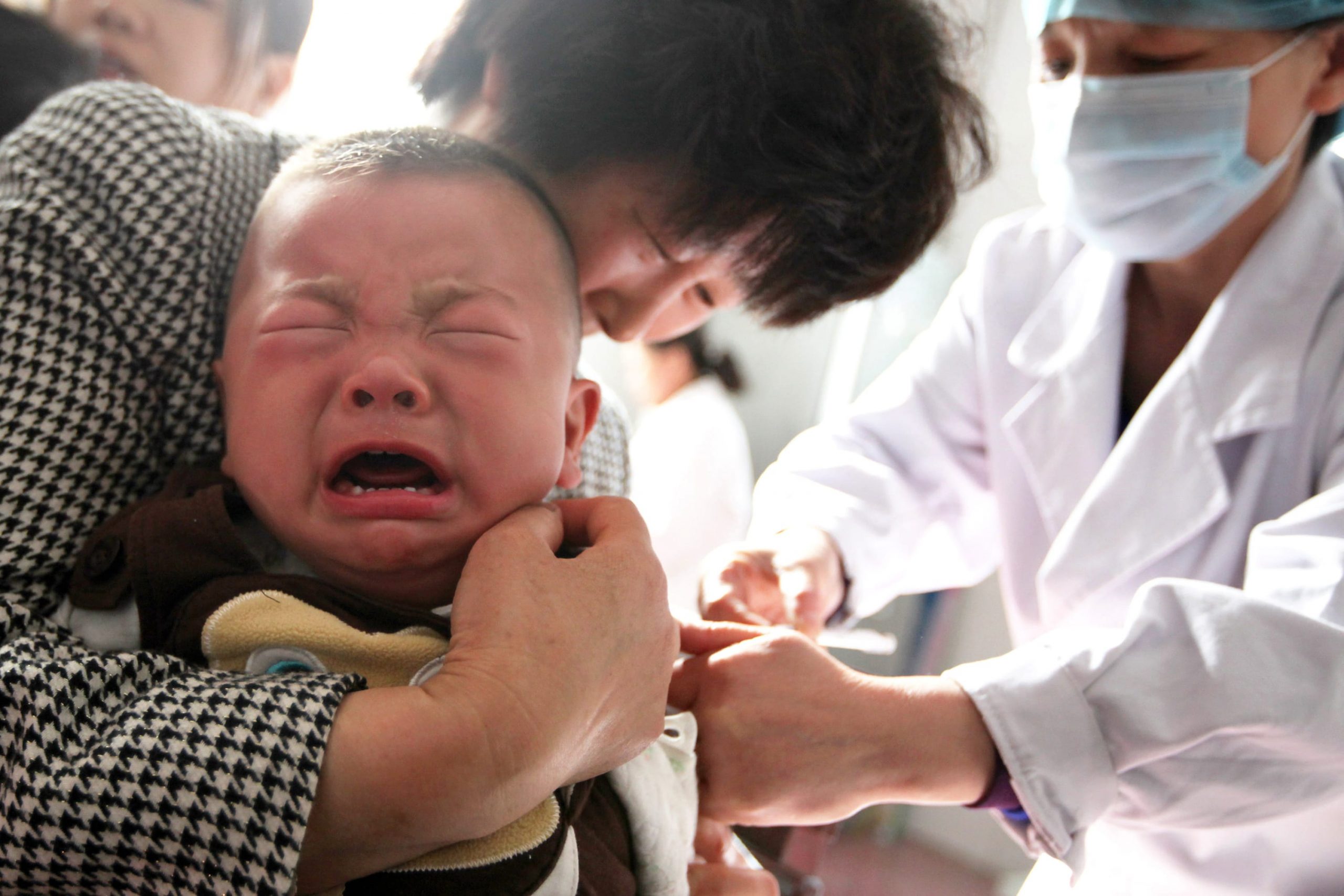
A child receives a vaccination shot at a hospital in Huaibei in China’s eastern Anhui province on July 26, 2018.
– | AFP | Getty Images
SHANGHAI – Some of the world’s largest medical and health care companies are stepping up their bets on the Chinese market, regardless of slowing economic growth and trade tensions.
At this week’s China International Import Expo in Shanghai, health care giants such as AstraZeneca, Boston Scientific, Eli Lilly and Thermo Fisher Scientific unveiled massive floor displays to promote their products in the Chinese market.
The companies are looking at China’s hundreds of millions of consumers and local talent. China spent $777 billion on health last year, a figure set to grow rapidly if the country is to match the level of developed nations’ spending on the industry, according to Export.gov, a website run by the the International Trade Administration (ITA) and U.S. Department of Commerce.
The Chinese government launched its first import expo last November in an effort to bill the country as a buyer, rather than manufacturer, of the world’s goods. While the European Union and American chambers of commerce in Shanghai said members did not necessarily benefit from participating in the first trade fair, official reports said the total number of American companies joining the second expo increased by 18.
There’s a lot of tension at the national and central levels … but at the end of the day it’s governors and mayors that are looking for investment and trade and exports from their states.
Matthew Margulies
vice president of China operations for the U.S.-China Business Council
This year, Massachusetts-based Thermo Fisher said it showed off some products to the Chinese or global market for the first time.
Meanwhile, UK-based AstraZeneca announced the establishment of new regional headquarters in Chengdu, Guangzhou and Hangzhou, in addition to Beijing. The company said it is expanding the role of its research and development center in Shanghai.
“The challenge we’re bringing is that our development team here in Shanghai, is no longer … in charge of products in China only. They will take the lead on global projects,” CEO Pascal Soriot said at a ceremony on Wednesday.
Those are just two of more than 300 medical and health care companies that exhibited at the second China International Import Expo, and they accounted for about a tenth of roughly 3,000 exhibitors, according to official data.
China’s Ministry of Commerce said that at this year’s expo, U.S. companies had the largest exhibition floor space of any country, at 47,500 square meters (11.7 acres).
The primary contingent of these U.S. participants was concentrated in the medical and health care industries, according to state media. Per official data, these included Merck’s and AstraZeneca’s 800 square-meter displays (8,611 square feet).
Unequal market access a challenge
These international health care giants are trying to tap the Chinese market even as foreign companies complain of policies that favor domestic players.
Carlo D’Andrea, vice president at the EU Chamber of Commerce in China, cited one example in which a local Chinese government stipulated that hospitals must purchase a certain amount of medical devices from domestic companies.
“If China is to offer the highest quality product, they should pay attention to the need of the patients,” D’Andrea said in a phone interview Tuesday.
The chamber’s business confidence survey for 2019 found that 43% of respondents said market access restrictions or regulatory barriers resulted in missed business opportunities. For more than 10% of those affected, they said those barriers were worth more than a quarter of their annual revenue in China, according to the survey.
That unequal market access in China’s state-dominated environment is a major issue in ongoing trade tensions between Beijing and Washington. The dispute between the world’s two largest economies has persisted for more than a year, with each country levying tariffs on hundreds of billions of dollars’ worth of goods from the other.
Opportunities beneath the surface
But for businesses, many opportunities remain at a subnational level, said Matthew Margulies, vice president of China operations for the U.S.-China Business Council.
“There’s a lot of tension at the national and central levels … but at the end of the day, it’s governors and mayors that are looking for investment and trade and exports from their states,” he said. “At that level there’s a lot of optimism around the conference.”
When China lowers the market access barrier and gives the Europeans opportunity to invest, they take the opportunity to invest in the territory.
Carlo D’Andrea
EU Chamber of Commerce in China
Case in point: A Wisconsin association for the ginseng root — known for its health benefits — had a presence at the expo despite noting that trade with China was about a quarter of what it had been due to tariffs.
China’s Ministry of Finance said this week that, as was the case last year, some goods would be exempt from tariffs if purchased during the import expo.
On Thursday, China’s Ministry of Commerce also indicated that a “phase one” trade agreement with the U.S. would include a rollback of tariffs from both sides. Beijing in September also exempted cancer drugs and a total of 16 American products from tariffs for a year.
The EU Chamber’s D’Andrea noted that cosmetics and pharmaceuticals are two industries in which he is seeing increased investment, thanks partly to improved government policy.
“When China lowers the market access barrier and gives the Europeans opportunity to invest, they take the opportunity to invest in the territory,” he said.
For global pharmaceutical companies, China already contributes an average 8% in revenues for the top ten global multinational players, McKinsey said in a report in May.


 Signal2forex.com - Best Forex robots and signals
Signal2forex.com - Best Forex robots and signals




